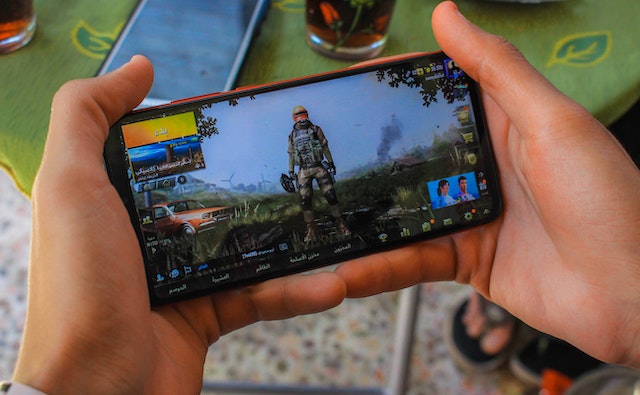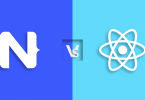Understanding the Timeline to Build a Game App in 2023: A Detailed Analysis
The gaming world has witnessed exponential growth over the past decade, fueled by advancements in technology and an ever-expanding user base. When you hire game developers, you should also have a good idea of the development time. This article will delve into the various stages of building a game app in 2023, providing a detailed analysis of the timeline required for each step.
Photo by samer daboul
Conceptualization (1-2 weeks)
The initial stage of game app development involves conceptualizing the idea and defining the game’s core mechanics. This phase includes brainstorming sessions, market research, and identifying the target audience. The duration of this phase can range from one to two weeks, depending on the complexity and uniqueness of the concept.
Design (2-4 weeks)
The design phase encompasses both visual and technical aspects. Graphic designers and artists create the game’s visual elements, including characters, environments, and user interfaces. Additionally, game designers work on level design, gameplay mechanics, and user experience (UX). This phase usually takes two to four weeks, depending on the complexity of the design elements and the team’s size.
Development (4-8 months)
The development phase is the most time-consuming and critical stage of game app creation. It involves programming, coding, and integrating various components to bring the game to life.
The duration of this phase can vary significantly depending on the scope of the project, the complexity of gameplay mechanics, technology, and the size of the development team. For instance, by hiring Three.js developers you can make things easier for a 3D game project. On average, game app development can take anywhere between four to eight months.
Testing and Bug Fixing (2-4 weeks)
Testers meticulously evaluate the game for bugs, glitches, and performance issues across different devices and platforms. The testing phase typically lasts for two to four weeks, but the timeframe may vary depending on the size of the game and the number of identified issues.
Optimization and Performance (2-4 weeks)
Optimization ensures the game runs smoothly on various devices, including smartphones, tablets, and PCs. This phase involves fine-tuning the game’s performance, addressing memory management, load times, and optimizing graphics and sound. The duration of optimization and performance improvement can range from two to four weeks.
Localization (1-2 weeks)
Localization has become increasingly important for game app developers in today’s global market. The time required for localization can vary depending on the number of languages supported and the amount of content to be translated, typically taking one to two weeks.
Launch Preparation (2-4 weeks)
The pre-launch campaign includes creating marketing materials, developing a promotional strategy, generating press releases, and setting up app store listings. The duration of this phase depends on the marketing plan’s complexity and the marketing team’s size. It is going to take mostly a fortnight or a month of time.
Launch and Post-Launch Support
The launch of a game app is an exciting and critical moment. Once the game is released, the development team monitors user feedback, reviews, and bug reports to make necessary updates and improvements. This ongoing support and maintenance phase is crucial to ensure user satisfaction, fix any post-launch issues, and introduce new features to keep the game fresh and engaging.
Key Factors Impacting Game App Development Time
Developing a game app involves numerous factors that can significantly impact the overall development timeline. Here we describe a few factors.
Scope and Complexity of the Game
Games with intricate gameplay mechanics, advanced AI, multiplayer functionality, and extensive levels or content generally require more time to develop. The more features and content the game includes, the longer it will take to design, develop, and test.
Platform and Technology
Developing a game for a specific platform, such as iOS, Android, or PC, requires adapting the game to the platform’s specific requirements and guidelines. Each platform has its own development tools, APIs, and performance considerations, which may require additional development time. Similarly, the technology stack chosen for development, such as the game engine or framework, can also affect the development time. Familiarity and expertise with the chosen technology can streamline the development process.
Team Size and Expertise
A larger team can divide the workload and work on multiple aspects of the game simultaneously, potentially reducing development time. Additionally, the team’s expertise and experience with game development can significantly impact the efficiency and speed of the development process. A skilled and experienced team is likelier to handle challenges and complete tasks more efficiently.
Asset Creation and Integration
Game assets, including graphics, videos, animations, sound effects, and music, are vital for creating an immersive gaming experience. Developing high-quality assets from scratch can take a considerable amount of time. Alternatively, utilizing pre-made assets or outsourcing asset creation can help reduce development time. Web-based video editor also come in handy for beginners and technical developers.
Iterative Development and Prototyping
Iterative development and prototyping involve creating and testing small versions or prototypes of the game to validate its mechanics, gameplay, and user experience. This iterative process helps identify and address issues early on, reducing the risk of major reworks later in the development cycle. While prototyping adds an extra step to the development process, it can save time in the long run by avoiding costly revisions and redesigns.
External Dependencies
Game app development may involve external dependencies, such as integrating third-party libraries, services, or APIs. When estimating the development timeline, it is essential to consider potential challenges or delays associated with these dependencies.
Post-Launch Support and Updates
Once the game is launched, providing post-launch support, updates, and bug fixes is essential to maintain user engagement and satisfaction. Continuous support and updates contribute to the game’s longevity and success. This support and maintenance task should also be calculated in the development timeline.
Ending Notes
The scope and complexity of the game, the chosen platform and technology, the team’s size and expertise, asset creation and integration, iterative development, external dependencies, testing and quality assurance, regulatory processes, and post-launch support all contribute to the overall development time. By understanding these factors and planning accordingly, developers can set realistic expectations and effectively manage the game app development process.






Leave a Comment